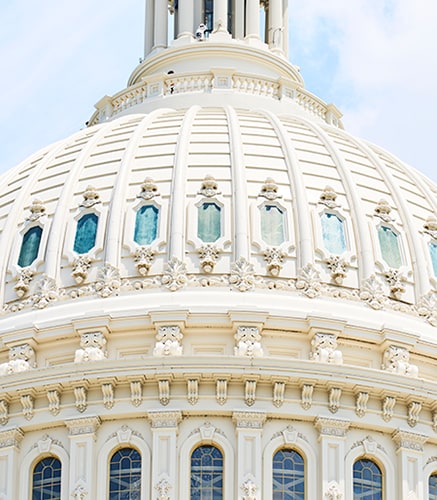Tax News You Can Use | For Professional Advisors
Jane Ditelberg, Director of Tax Planning
June 30, 2025
Originally a product of the Tax Cuts and Jobs Act (TCJA) passed in 2017, the Qualified Opportunity Fund (QOF) is a modern version of the classic tax policy strategy, which matches economic need with private investment for mutual benefit. In this case, Congress identified under-resourced communities throughout the country, called Opportunity Zones (OZs), and created a framework for investment in them called Qualified Opportunity Funds (QOFs), which provide certain tax benefits to investors. The special rules for gains from investment in QOFs are intended to incentivize private investment in areas of economic need through tax benefits. While some of the benefits of investments in QOFs were only available to taxpayers who made an investment before 2021, others remain in effect for investments made before December 31, 2026. In addition, the current pending tax legislation in the One Big Beautiful Bill Act (OBBBA) proposes introducing a new round of OZ investments for the period January 1, 2027 through December 31, 2033.
Opportunity Zones
Subchapter Z of the Internal Revenue Code (IRC) designates specific areas as OZs in an effort to promote investment in areas they have deemed economically-distressed communities. The Department of Treasury and the Internal Revenue Service (IRS) have certified designated areas in all 50 states, the District of Columbia and five U.S. territories, including Puerto Rico, as OZs. For a comprehensive list of OZ resources, visit the Community Development Financial Institutions Fund website.
In designating OZs, particular consideration was given to areas that:
- are currently the focus of mutually reinforcing state, local, or private economic development initiatives to attract investment and foster startup activity;
- have demonstrated success in geographically-targeted development programs such as promise zones, the new markets tax credit, empowerment zones and renewal communities; and
- have experienced significant layoffs due to business closures or relocations. The designation of an OZ remains in effect for 10 years.1
It is estimated that close to 35 million Americans live in OZs. The data on the need for investments in them is compelling:
| Opportunity Zones | |
|---|---|
| Poverty Rate | The poverty rate in OZs is 32%, compared to 17% for the average U.S. census tract |
| Median Family Income | OZ median family income is on average 37% below the area or state median |
| Unemployment Rate | The OZ unemployment rate is nearly 160% higher than the average U.S. census tract |
Demographics have shifted since the 2010 census that formed the basis of the originally identified OZs. The provision in OBBBA will, if enacted, identify a new set of OZs. The indications are that these would include more rural areas than the first round and will be based on current data. Some of the OZs will be based on selections by the individual states. Under the Senate’s version of the bill, there will be rolling 10-year OZs.
What Is A Qualified Opportunity Fund?
In order to get the tax benefits of investing in an OZ, investors must invest via an QOF, which is an investment vehicle organized as a corporation or a partnership for the purpose of investing in qualified opportunity zone property (QOZP). QOZP includes authorized investments within an OZ that qualify for the tax treatment. This could be stock, partnership interests or business property. Note that another QOF does not qualify as QOZP.
A QOF must hold at least 90% of its assets in QOZP. QOFs become qualified by self-certification, with no required approval or action by the IRS. If a QOF fails to meet the 90% requirement (and unless the fund establishes reasonable cause), the fund is required to pay a monthly penalty of the excess of the amount equal to 90% of its aggregate assets over the aggregate amount QOZP held by the fund, multiplied by the underpayment rate in the IRC. If the fund is a partnership, the penalty is taken into account proportionately as part of each partner’s distributive share.
Potential Tax Benefits For Investors
The TCJA provided three main tax incentives to encourage investment in QOFs, only some of which are still available in 2025:
- First, it allows for the temporary deferral of inclusion in gross income for gains that are reinvested in a QOF until December 31, 2026. This is a lesser benefit than it was in the early years of OZs because the deferral period is shorter. However, if the OBBBA becomes law, there will be a chance of deferral until 2033 for investment in the new funds after January 1, 2027. The Senate version of the bill would include rolling 10-year OZs.
- Second, the TCJA allowed for exclusion of up to 15% of the gain on the original investment that is deferred by the investment in the QOF if held for seven years. Due to the expiration date of December 31, 2026, it is not possible to make an investment in a QOF today and qualify for the 15% exclusion (which requires a seven year holding period) or the 10% exclusion (which requires a five year holding period). However, investments can be made into OZs until December 31, 2026, without the exclusion. For new investments after January 1, 2027, the OBBBA provides for a 10% exclusion available for those holding the asset for five years and a 30% exclusion available for new investments in Rural OZ Funds if held for five years. The OBBBA provisions are still only proposals at this point.
- Third, the taxpayer may elect to exclude from gross income the post-acquisition gains on investments in QOFs that are held for at least 10 years.2
The rules are nuanced and require careful consideration of your unique goals and circumstances. At its core, the strategy is intended to work as illustrated in the following example.
Example:
In 2022, Irene held appreciated stock in company A. She purchased the stock in 2015 for $200,000 and in 2022 it was worth $300,000.
- In 2022, Irene sold the stock for $300,000, and within 180 days she invested the $100,000 gain in a QOF. Her original basis in the investment in the fund is zero.
- If Irene sells the investment in the fund before December 31, 2026, she will include her $100,000 deferred gain in her income. If she holds the investment in the fund on December 31, 2026, under the Act, the lesser of the current value of the fund or her deferred gain will be included in her income, again, using the applicable basis.
- After 10 years, any further gain in the investment in the fund itself will be excluded from her income.
| 2022 | December 31, 2026 | Year 10 (2032) |
|---|---|---|
| $100,000 investment in fund; deferred gain; zero basis in investment in the fund. | Deemed recognition of deferred gain. | Basis in investment in the fund equal to fair market value, if investor files a timely election. |
Additional Tax Considerations Include The Following:
- If an investment is made with mixed funds (part deferred gain and part other), the investment is treated as two separate investments in the fund. The new tax rules only apply to the deferred gain portion of the investment.
- In the case of a decedent, amounts recognized, if not properly included in the gross income of the decedent, will be included in gross income of the decedent’s estate as income in respect of a decedent.
In sum, the maximum amount of the deferred gain from the original investment is equal to the amount invested in a QOF by the investor during the 180-day period, beginning on the date of sale of the original investment. The initial basis in the deferred gain portion of an investment in a fund is zero. Part or all of the deferred gain (depending on how long the investment in the fund has been held) will be deemed recognized December 31, 2026. After 10 years, it is expected that any further gain in the investment in the fund itself will be excluded from income.
Caution In The Face Of Opportunity
This special gain deferral election is not available for sales or exchanges after December 31, 2026, under current law. The OBBBA proposes new OZs, and, if enacted, will provide tax benefits for those who invest in the new zones beginning in 2027. This makes the timing of an investment in an OZ and the transaction generating the gain a taxpayer wishes to defer critical to the tax treatment. All persons interested in QOFs should confer with their legal and tax advisors regarding their particular circumstances.
Key Takeaways:
- Investments in QOFs provide tax deferral opportunities for investors.
- While benefits under the TCJA would largely be over in 2026, the new pending tax legislation, if enacted, will provide new OZs beginning in 2027.
- Investments in new OZs will offer tax exclusion as well as tax deferrals.



